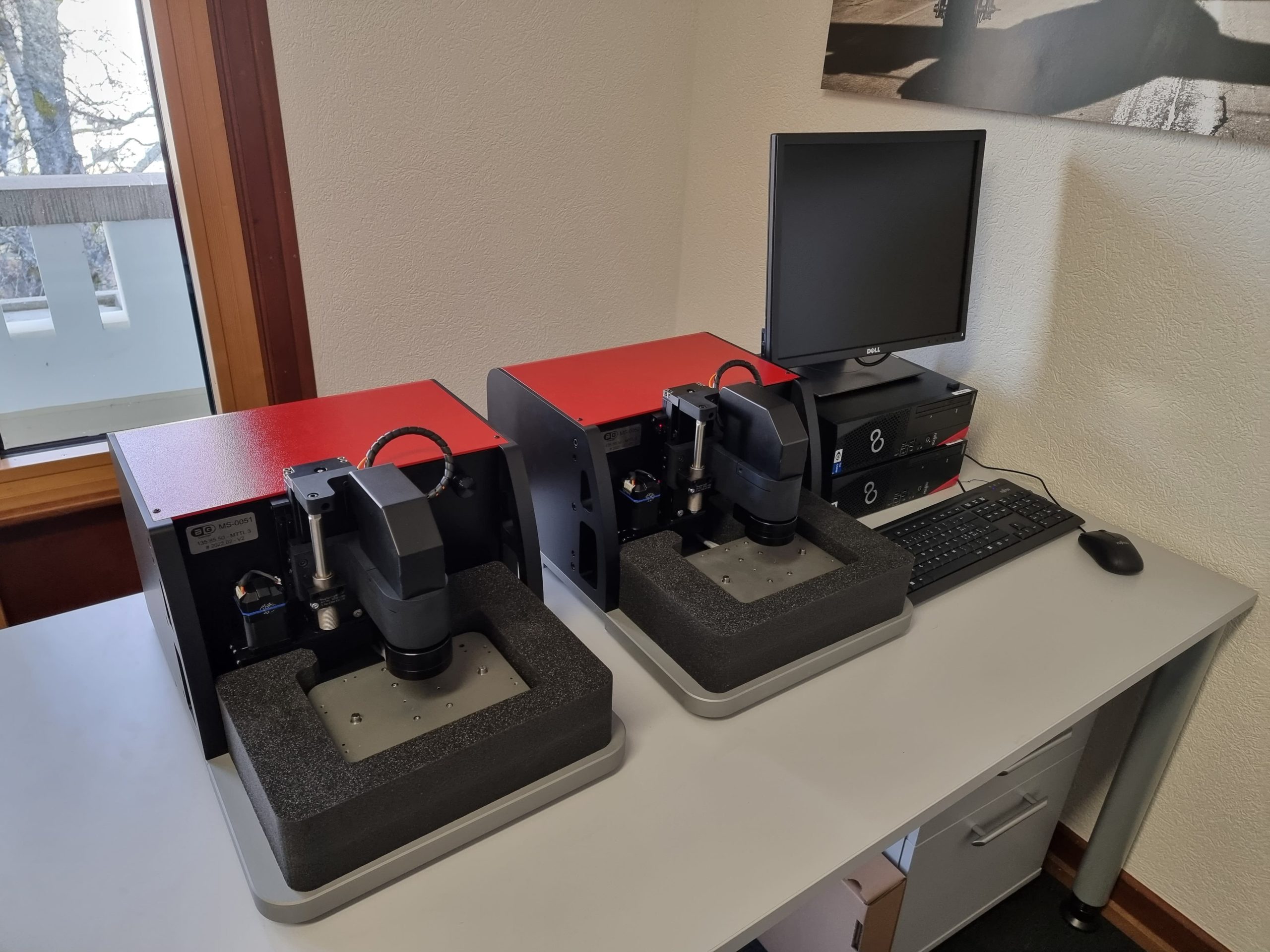Discover MicroSpeed, a non-contact flatness measurement device designed to guarantee speed, precision and efficiency in your workshop inspection operations.
Confocal chromatic sensor for fast, accurate measurement
Read and view results in real time
Compact, easy-to-use CNC machine

Developed in 2009, the Micro speed is a non-contact, easy-to-use, fast and precise flatness measurement instrument designed to meet users’ specific needs.
A flatness measurement instrument that guarantees precise, repeatable results.
A compact device for intuitive operation, with no need for complex training.
A chromatic confocal sensor for fast, high-precision measurements.
Part positioning and movement by cross table.
Flatness measurement results are interpreted live.
Machine guaranteed for 2 years, BG Concept provides periodic inspection and maintenance.
MicroSpeed is a non-contact flatness measuring device that combines speed and precision. Its compact design and intuitive operation make it indispensable for reliable, repeatable results in the workshop.
Users can monitor their parts during the various phases of the manufacturing process to guarantee quality.
30 years of experience
Specializing in micromechanics, stamping and machining, BG Concept offers customized solutions for the manufacture of precise miniature parts and the design of mechanical components for the most demanding sectors.
Tailor-made solutions for every customer
Our state-of-the-art equipment is a major asset when it comes to producing and checking complex components to extremely tight tolerances, meeting the rigorous demands of high-tech industries.
High-precision manufacture of micro-parts for complex, reliable systems.
Mass production of small, complex automotive components.
Production of components used in miniature connectors.
Meticulous machining of high-precision watch parts to tight tolerances.
Manufacture of microcomponents used in sensors.
Medical technology requires the manufacture of complex, high-quality parts.
Frequently asked questions
Training for this control instrument is provided at the time of installation.
The warranty is 2 years.
Yes, our device is certified CE compliant.
Flatness measurement is an essential operation in many industries, from micromechanics to aeronautics. To carry out this measurement accurately, it is crucial to understand the different methods and tools available on the market.
Flatness refers to the way a surface conforms to an ideal plane. To measure this characteristic, instruments are generally used that detect deviations of the surface from this plane. Professionals begin by choosing the right type of instrument according to the specific application, part dimensions and accuracy requirements.
Instruments used to measure flatness include dial gauges, laser sensors and tape devices. Of these, the laser plane is particularly effective, as it projects a laser beam onto the surface to be analyzed. This provides an accurate representation of height variations over the entire measured area.
The dial indicator is a traditional instrument that uses a dial to display height differences. By placing the dial gauge on different points on the surface, users can detect variations and obtain a value indicative of flatness.
The laser sensor offers non-contact measurement. Thanks to this system, it is possible to quickly and accurately analyze the surface by recording values at different points. This eliminates the potential errors associated with handling physical instruments.
To measure flatness, it is important to follow several key steps:
Flatness measurement is crucial in various fields such as :
In short, measuring flatness requires a judicious choice of instruments and a rigorous method to guarantee accurate, reliable results.
Flatness measurement requires specific instruments adapted to the requirements of the sector and the characteristics of the parts to be measured. Manufacturers offer different types of instrument, which can be classified according to their technology and application.
Traditional mechanical instruments, such as dial gauges, are often used for simple measurements. They work on the principle of physical contact with the surface to be analyzed. This method involves a certain level of manipulation and can introduce errors if not carried out correctly.
Optical instruments, such as the laser plane, have become popular thanks to their precision and speed. The laser projects a line onto the surface, allowing users to visually observe deviations in real time. This facilitates analysis of critical points on a surface, while minimizing the risk of error.
Modern devices often integrate digital technologies with computers to analyze and process the data collected during measurement. These systems not only record values, but also enable detailed statistical analysis, which can be essential for professionals seeking to improve their manufacturing processes.
When choosing an instrument to measure flatness, several characteristics must be taken into account:
Flatness measurement is an essential process in many industries, where quality and precision are paramount. Thanks to technological advances, a wide range of instruments is available to meet the specific needs of professionals. Choosing the right tool is key to guaranteeing accurate and reliable results, ensuring success in complex industrial applications.